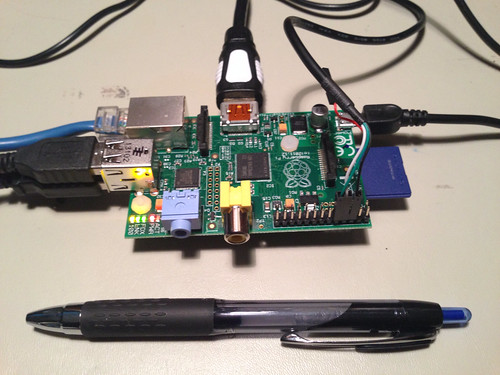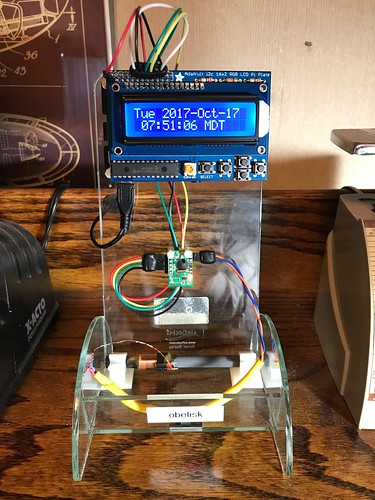I've been using the Raspberry Pi single board computers (SBC) ever since the Model 1 (see below) came out in 2012. At about US$40 for a board, it is often easier just to buy a new board for a new project, rather than taking apart an existing project and sacrificing its SBC. Today, I'm buying Raspberry Pi 4B boards, still around US$40 each - more if you want more memory, and who doesn't?
For a long time now I've been having an intermittent problem with one of my projects, Obelisk, my WWVB Radio Clock, a desk clock/NTP server I built using a Raspberry Pi 3B and tiny AM receiver board that picks up the NIST WWVB digital time signals from the transmitter near Fort Collins Colorado. Obelisk drops off my home WiFi network, after which it becomes impossible to diagnose since I can't log into it. I power cycle the unit, and it works fine for another month or so until it fails again. Since the clock and display keep running (meaning my software on the 3B is still running), this looked to be a problem with the WiFi chip on the 3B. I have about a dozen Raspberry Pis around the Palatial Overclock Estate that run 24x7, and this is the only one that seems to have this problem.
I finally decided to replace the Raspberry Pi in Obelisk. I figured I would just order another 3B board, only to be taught an important lesson about supply and demand: the cheapest 3B I could find online was US$175, and that was used; a new one was over US$250!
That isn't as crazy as it sounds. Aside from the current semiconductor chip shortage, one of the design changes made in the Raspberry Pi 4B was to reverse the placement of the Ethernet jack with the dual USB A jacks at one end of the board. This not only made all of the older Raspberry Pi cases useless with the new 4B, but made use of the 4B problematic to retrofit into a lot of applications that were originally made with older versions of the SBC. (The 4B also added a second micro HDMI port, so those old cases would have been obsolete anyway... which may explain why the Pi architects swapped the Ethernet and USB A jacks.)
Fortunately I have four plastic storage bins of Raspberry Pi paraphernalia in the basement, ranging from my original Raspberry Pi model 1 to, fortunately, several Raspberry Pi 3Bs. They were all in cases, labeled, and ready to be reused as part of whatever project for which they were originally purchased. But in this case, I figured the only reasonable thing to do was to open up one of the cases and extract the 3B. (So long to Tin, a Raspberry Pi 3B that took part in my Roundhouse IPv6 project.)
It only took me a few minutes, and accidentally breaking a nylon spacer, to swap the 3B in Obelisk with this other one. Will that fix the problem? Only time will tell. But for sure it had never occurred to me that the Little SBC That Could would become a collector's item.



No comments:
Post a Comment